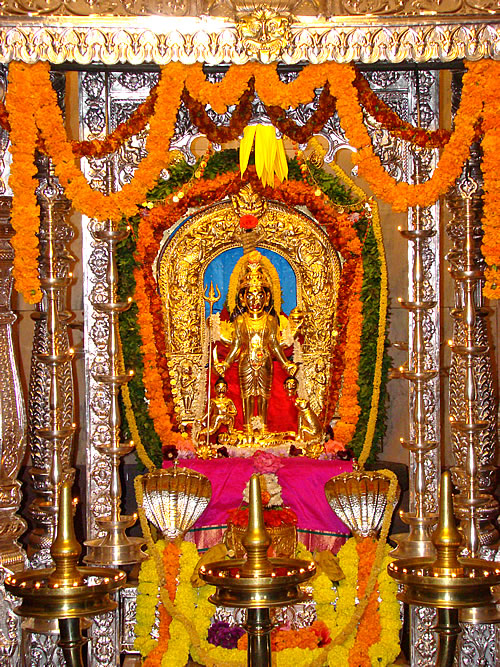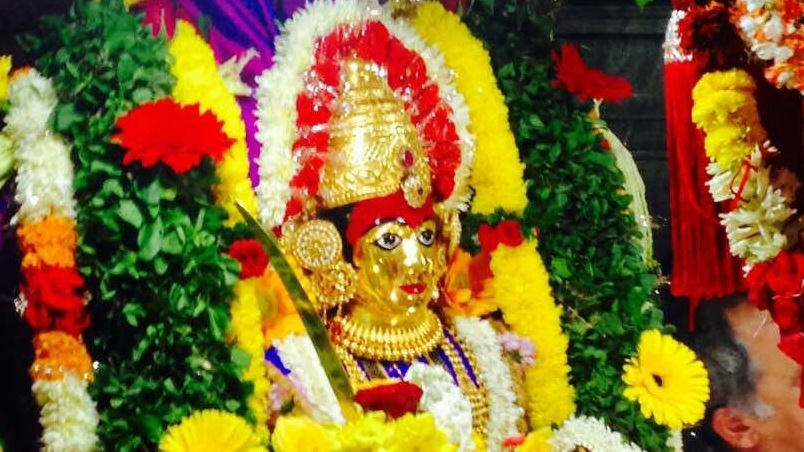No products in the cart.
Regardless of the status of women in today’s scenario, Hindu mythology has always portrayed females as a symbol of great power, pride, authority and braveness. Women are known to be great warriors, having capability to handle weapons that even men can’t. Many great lords have surrendered to the power of females and attained salvation. Bhairava, the great Hindu tantric surrendered in front of goddess Vaishno devi (manifestation of goddess Durga), and later became the protector of women.
Hindu mythology is full of stories of goddesses. One such was goddess Mhalsa. She was considered to be an avatar of Vishnu, that is why she is also called Mhalsa Narayani. She also has an independent form in which she is called Mohini. She is also considered as companion of folk god Khadoba, a folk god. Some people consider her as a form of lord Shiva, and so she is associated with Parvati, Shiva’s wife. She is worshipped as Kuladevi (a family goddess) by people of different communities and castes. The goddess has her chief temples situated in Mardol in Goa, Paithan and Nevasa (called Mohiniraj) in Maharashtra. Also, her temples exist in states of Karnataka, Gujrat and Kerela. Being Khandoba’s companion, she is worshipped with him in all his places of worship.
The goddess has dual iconographies depending upon the form depicted. in Mahalsa Narayani form, she is portrayed as having has four hands, carrying a Trishul, a drinking bowl a sword and a severed head. She is also considered wearing Yajnopavita- the sacred thread which is generally dedicated to males, breaking the male stereotypes and posing as equally pure as a man to wear that thread. She stands on a prostrate man or a demon, symbolising herself as a brave and killer of evil. A lion or tiger stands by her, licking the blood dripping from severed head. As Khandoba’s wife, she is portrayed with two arms, accompanying khandoba on horse standing beside her.
There are many stories regarding the appearances of Mhalsa Devi. According to Malhari mahatmya, a Marathi literary work, there were two demons Mani and Malla. They performed austerities to delight Brahma. Pleased by their efforts, Brahma blessed them with immense power. Having been granted with power, they started to make chaos in both earth and heaven. When their harassment became unbearable, the Humans and Deva’s approached lord Shiva for help. For this purpose, Shiva took the form of Bhairav, and Parvati took the form of Mhalsa.

Another story of her appearance goes to the times of Samudra manthan called churning of ocean of milk. The churning was done by gods and demons. The demons tried to steal the pot of Amrit-elixir of immortality. Seeing this, lord Vishnu took the form of enchantress, Mohini, seized the pot of Amrit from demons, and gave it to the gods. While Mohini was distributing the Amrit, one demon manages to get amrita from Mohini by crook. Knowing this, she kills that demon and holds his head (Rahu) in her hand, whereas his body part continues to run with fear to escape from her. She stops that body part with her leg and stands on it on Mahalasa hill near Nevase. Hence, she gets name Mahalasa Devi and is believed to be incarnation of Mohini.
Apart from above two there is one more story linking her to khandoba. Some people believe that, lord Shiva was enchanted by Mohini. She promised him to be his wife, in her earthly incarnation, when he would be incarnated as Khandoba on earth.
It has been documented in skanda purana that Bhagwan Parshuram brought 10 Saraswat Brahmin families from Trihotra in north to Gomantak (Goa). After that, more families started to migrate here and the Mhalsa devi following families established themselves in Varunapur or Verna as it is called now. Later on, the idol was migrated from Verna to Mardol 16th century and the first Mhalsa Devi temple was established there. There is a copper plate in this temple which describes this event. The Mahalsa Narayani temple in Mardol remains the main temple for devotees till date. Other chief temples are situated in Paithan and Nevasa in Maharashtra
Apart from Saraswat brahmin caste, some other groups which have Mhalsa Devi as kuldevi are Karhade brahmins, Daivajna Brahmins, and Bhandaris.
Being the Kuladevi- the family goddess, many families worship her for the well being of their family. She is also considered one of the forms of goddess Parvati, hence considered a symbol of beauty with fierceness.







Om Namo Mahalasa Devi
Om Namo Mahalasa Devi
Om Namo Mahalasa Devi
Your Article Is Very Interseting, and useful for devotees.Thanks For Sharing the Valuable Information